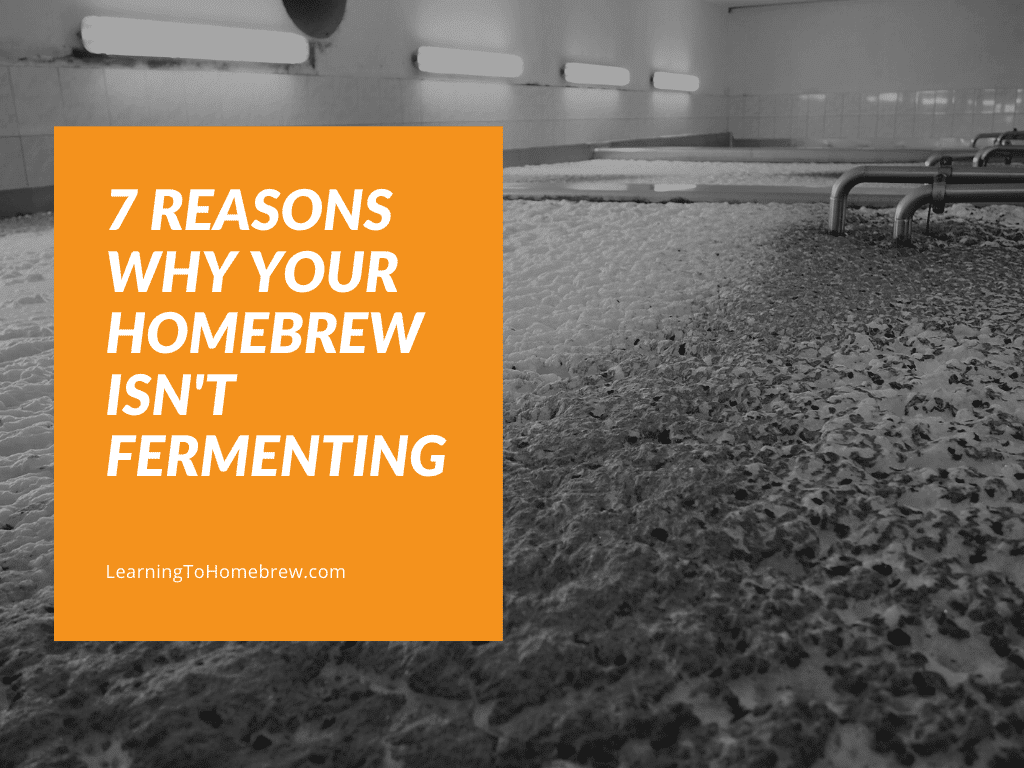Seeing a krausen forming can be a little concerning if you are new to homebrewing. You may be thinking that a good stir will break up the yeast cake and increase fermentation.
You should not stir your homebrew during fermentation, in most cases, as it can contaminate the beer with outside bacteria, wild yeast, and oxygen which leads to off-flavors or spoilage. Although careful stirring could help restart a stuck fermentation, take special care to ensure that fermentation actually stalled before opening the fermenter.
Stirring can have disastrous potential to ruin your beer in a variety of ways. There are really only a couple of reasons for you to ever have to stir during the fermentation process and not many methods to safely do so.
Topics We Cover
Should you stir during fermentation?
Many novice homebrewers can quickly become impatient during the fermentation process once activity slows down. In fact, they might wonder if they should be doing something to speed it up.
With the exception of having a fermentation not start or one that has stalled, you should not stir your beer while it is fermenting. At the very least there is no way to benefit from stirring during this part of the process and at the worst you are potentially allowing harmful bacteria into your product.
Everything that we know of life depends on oxygen in some way. The same goes for the yeast while making your beer. Unfortunately in the fermentation process oxygen works in both positive and negative ways and can greatly affect the outcome of your finished beer.
At the beginning of the process, the yeast thrives on oxygen, and the more you can add to the wort the better. If oxygen is introduced too late into the wort then the yeast does not have enough sugar left to use all of the oxygen resulting in your beer becoming oxygenized.
Introducing oxygen into the fermentation process too late when the yeast does not have enough time to use oxygen, will cause the beer to become oxygenated resulting in strange flavors and low shelf-life.
Think of the way oxygen affects metal over time and causing rusting, the same concept can happen to your beer if it becomes oxygenated. While it is not as harmful as rusting metal it can cause the beer to have a cardboard-like flavor. The shelf life of the beer is also affected by the oxidation process causing the beer to stale significantly faster.
Do you ever stir the yeast in homebrew?
You shouldn’t stir your homebrew if fermentation has already started.
If you don’t notice any activity starting from the beginning of fermentation then you are probably dealing with an example of a fermentation that never started.
Fermentations that do not start are commonly caused by a variety of factors:
- The age and quality of the yeast you are working with – Most people forget that yeast is alive, even as it sits there doing nothing before it is activated, and if you are not careful when handling and age itself can cause the yeast to die.
- If you pitched your wort in too high or too low of temperatures – Happens when the wort is pitched in temperatures too high which can neutralize the yeast or at the very least reduce its ability to do what it is supposed to do. Less common would be to pitch in too low of temperatures which will give the yeast a very sluggish reaction and may stall altogether.
- The nutrients required for the yeast to grow are not there – This is not very common for the regular homebrew, but can happen due to high sugar content or non-malt grain.
- Lack of oxygen in the wort to start with – At the start of the fermentation process, you have the best opportunity to vigorously agitate the yeast to get as much oxygen into the wort as possible to give the best results.
- You did not pitch enough yeast into the wort – Simply not enough yeast was pitched to ensure that they got a healthy start to the fermentation process.
An easy way to check if your fermentation has stalled, and something you should be doing anyway, is to measure the gravity and if it has stopped dropping too soon or is dropping too slowly then you may have a stuck fermentation. Another way to check is by taking a temperature reading. We have a great article going into better detail about how to check for this here.
If you determine this is the case with your beer then there are a couple of ways to restart the fermentation process while being careful not to avoid ruining your beer.
- You can stir it to introduce some oxygen and restart the fermentation process.
- Be sure to sanitize all equipment before use to limit the chance of harmful bacteria being introduced.
- Use a long spoon that reaches to the bottom.
- Be as careful as possible not to splash or agitate the top of the wort.
- Reseal the fermenter as quickly as possible to allow as little unneeded influences into your beer.
- Fix it by adding a fresh starter to your fermenter.
- Use 2 quarts for 5 gallons.
- Mix dried malt with water and stir until dissolved. (some people like to use a lightly hopped wort)
- Pitch wort with fresh yeast.
- Wait until vigorous fermentation.
- Add to the beer in the fermenter and give a good full stir to restart the entire fermenting process.
What about stirring the krausen?
There are two main types of yeast that are used to brew beer, bottom-fermenting and top-fermenting. If you have not seen a top-fermenting yeast activate yet it can seem a little strange with a large yeast on top of the beer.
Don’t worry about this as the krausen will sink into the beer towards the end of the process, it is completely normal.
If you force the krausen back into the wort it will cause your beer at the end to not taste the way it is supposed to and has the potential of allowing those harmful bacteria in again. As many times as we can limit doing anything to the beer during the fermentation process the better your end result is likely to be.
Should I shake my beer fermenter instead?
As a general rule after starting the fermentation, you would ideally not have to do much other than some gravity and temperature readings. The rest is mostly just patience and trusting in the instructions you used and yourself to follow those directions correctly.
If your beer does stall please try one of our other recommendations before trying to stir your beer in the fermenter.
Can you move beer during fermentation?
One of the more important aspects of homebrewing is finding a stable and controlled environment for your fermenter. You can move the fermenter if it is necessary but it is not recommended as changes in temperature, lighting, and physical contact may cause irreparable harm to your beer.
If you have to move your fermenter, take special care not to agitate it too much and ensure that it stays sealed at all times. Also, be sure that you are moving it to a place with controlled temperature and light to avoid any potential issues.





